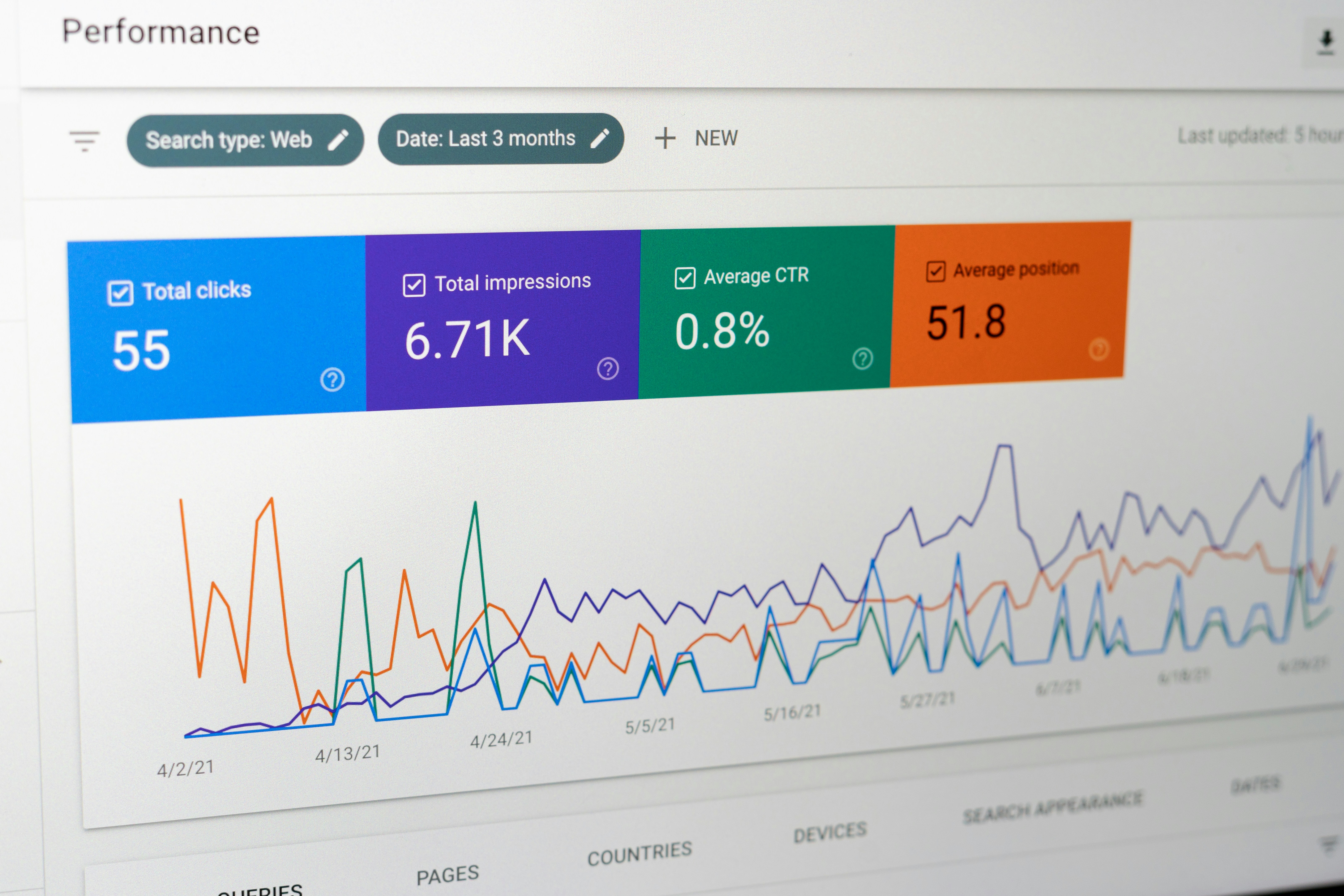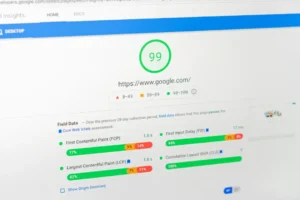
Introduction to Digital Marketing Analytics
In the ever-evolving realm of digital marketing, analytics has emerged as a cornerstone for success. Digital marketing analytics refers to the practice of collecting, measuring, and analyzing data related to online marketing activities. This process is crucial for businesses seeking to understand their marketing performance and optimize their strategies. By harnessing various analytics tools, organizations can gain valuable insights into user behavior, preferences, and engagement patterns. These insights are instrumental in driving effective marketing campaigns and improving overall performance.
The importance of digital marketing analytics cannot be overstated. In a competitive landscape where businesses strive to attract and retain customers, the ability to analyze data allows marketers to make informed decisions grounded in evidence rather than assumptions. With accurate data, companies can pinpoint what works and what doesn’t, leading to better resource allocation and a more effective allocation of budgets. Furthermore, understanding user behavior through analytics can help identify trends, enabling businesses to tailor their offerings to meet evolving customer needs.
Analytics tools empower brands by providing a comprehensive view of their online presence. These tools can track various metrics, such as website traffic, conversion rates, and social media engagement. By interpreting these metrics, marketers can adjust their strategies in real time, enhancing user experiences and driving conversions. With the integration of advanced technologies such as artificial intelligence and machine learning, the capacity for data analysis has become even more robust and precise, further solidifying analytics as an essential component in digital marketing.
As the digital landscape continues to change, mastering analytics tools and understanding their significance will remain vital for businesses aiming to achieve long-term success in their marketing strategies. By investing in robust analytics capabilities, organizations can position themselves to navigate the intricacies of consumer behavior and market dynamics effectively.
Key Analytics Tools for Digital Marketing
In the rapidly evolving landscape of digital marketing, analytics tools play a pivotal role in shaping strategies that drive business success. Among the frontrunners in analytics, Google Analytics stands out as a cornerstone tool, offering comprehensive insights into website traffic, user behavior, and conversion metrics. Its intuitive dashboard allows marketers to track key performance indicators (KPIs) such as page views, session duration, and bounce rates, facilitating data-driven decision-making.
Another significant platform is Adobe Analytics. This advanced tool caters to enterprises seeking in-depth analysis and customization. It enables marketers to delve into real-time data with powerful segmentation capabilities, tracking user interactions across various channels. With features such as anomaly detection and predictive analytics, Adobe Analytics empowers businesses to anticipate trends and tailor their campaigns accordingly.
Social media insights tools, such as Facebook Insights and Twitter Analytics, also play an essential role in digital marketing strategies. These platforms provide valuable metrics related to audience engagement, reach, and demographic information. For instance, Facebook Insights offers data on post-performance, allowing marketers to refine their content based on user interactions. Similarly, Twitter Analytics allows users to track tweet impressions, engagement rates, and follower demographics, enabling them to optimize their social media strategies effectively.
Moreover, integrating these analytics tools into a cohesive marketing strategy can significantly enhance the understanding of customer journeys. By leveraging data from multiple sources, businesses can create a holistic view of their audience, leading to improved targeting and personalization of marketing efforts. The selection of appropriate analytics tools should align with specific business goals, ensuring that marketers have the necessary insights to drive effective campaigns and achieve desired outcomes.
Understanding User Behavior Data
User behavior data is an essential component of digital marketing analytics, as it provides insight into how potential customers interact with websites and online platforms. This data encompasses various metrics that reveal crucial patterns in consumer engagement, ultimately informing strategic marketing decisions.
Website traffic serves as a foundational measure of user behavior, tracking the number of visitors to a particular site. Understanding visitor numbers can help marketers identify high-performing content or campaigns, while also gauging the effectiveness of various promotional methods. This leads to the analysis of engagement metrics, which provide deeper insights into user interactions, such as the average time spent on pages, click-through rates, and bounce rates. These indicators reflect user interest and satisfaction, allowing marketers to refine their approach and enhance user experiences.
The user journey is another vital aspect of understanding user behavior data. It traces the path a visitor takes from their first interaction with a brand to eventual conversion, identifying critical touchpoints along the way. Mapping user journeys enables teams to pinpoint areas where users may drop off, offering valuable opportunities to optimize communication and engagement strategies. Additionally, conversion rates, the percentage of users who complete desired actions, provide a direct metric for assessing the effectiveness of marketing campaigns. By combining insights from conversion rates with website traffic and engagement metrics, businesses can create a holistic view of user behavior, facilitating targeted improvements.
In summary, understanding user behavior data is paramount for effective digital marketing. By analyzing website traffic, engagement metrics, user journeys, and conversion rates, marketers can derive actionable insights that guide their strategies and enhance overall performance. As a result, these analytics tools play an indispensable role in mastering the complexities of digital marketing.
Gathering Data: Best Practices
In the realm of digital marketing, the foundation for a successful analytics strategy lies in the data gathering process. Effective data collection from various channels is essential to gain insights and optimize marketing strategies. To achieve this, implementing a robust tracking setup is paramount. Utilizing tracking tools such as Google Analytics allows marketers to monitor user behavior and interactions across websites and applications, giving a clearer picture of audience engagement.
A/B testing is another key practice that helps refine marketing tactics. By comparing two versions of a web page, email, or advertisement, marketers can determine which variant performs better based on actual user data. This not only facilitates better decision-making but also enhances the effectiveness of marketing campaigns. Consistently applying A/B tests can lead to significant improvements in conversion rates and overall performance.
Segmenting audiences is equally important in optimizing data collection. By categorizing users based on demographics, behavior, or specific interests, marketers can tailor their approaches and gather more relevant data. This segmentation enables more precise targeting and personalized marketing efforts, which can lead to increased engagement and customer satisfaction.
Moreover, ensuring data integrity is crucial for reliable insights. To maintain the accuracy of gathered data, marketers should regularly audit their analytics setups and validate the data collected. This may involve cross-referencing data from different platforms to identify discrepancies and rectify any inconsistencies. Adopting these best practices for gathering data will not only enhance the quality of insights but also support a more effective and dynamic digital marketing strategy.
Evaluating Marketing Performance
In the realm of digital marketing, evaluating performance is essential for understanding the effectiveness of various strategies. One must begin by defining key performance indicators (KPIs) that align with specific marketing goals. KPIs serve as quantifiable metrics that help brands measure their performance against predefined objectives, ensuring that marketing efforts are both strategic and effective.
Common KPIs relevant to digital marketing include website traffic, conversion rates, customer acquisition cost (CAC), and return on advertising spend (ROAS). Each of these metrics provides insights into different aspects of marketing performance. For instance, website traffic indicates the volume of visitors engaging with a brand’s online presence, while conversion rates reflect the percentage of visitors who complete desired actions, such as making a purchase or signing up for a newsletter. By closely monitoring these indicators, marketers can assess the efficacy of their campaigns and make necessary adjustments.
Successful performance evaluation also requires setting benchmarks for success. This involves identifying industry standards and competitor metrics to establish realistic goals. Marketers can utilize historical data from previous campaigns to set personalized benchmarks, allowing them to gauge the effectiveness of current strategies. Analyzing trends over time can provide additional context, helping marketers to pinpoint patterns that contribute to success or identify areas needing improvement.
Furthermore, regular reporting and analysis of these KPIs can foster a data-driven culture within organizations. By synthesizing insights from digital marketing efforts, stakeholders can make informed decisions regarding resource allocation and strategy refinement. Ultimately, an ongoing evaluation of marketing performance metrics not only facilitates accountability but also ensures that marketing goals are consistently met and exceeded.
Extracting Insights from Data
Data analysis plays a pivotal role in shaping effective digital marketing strategies. By utilizing various techniques, businesses can convert raw data into actionable insights that inform decisions and drive success. Among these techniques, cohort analysis, trend identification, and customer segmentation stand out as vital methodologies for extracting meaningful information.
Cohort analysis involves segmenting users based on shared characteristics or experiences within a specific timeframe. For instance, a digital marketing team can analyze customer behavior from those who subscribed to a newsletter during a particular month. By investigating this group, marketers can better understand their needs and behaviors, allowing targeted campaigns that resonate more with their audience. This tailored approach not only improves engagement but can also lead to higher conversion rates.
Trend identification entails examining data over time to recognize patterns or shifts in user behavior. By tracking key performance indicators (KPIs), businesses can uncover trends that may indicate a need for strategic adjustments. For example, if a sudden increase in website traffic coincides with a promotional campaign, marketers should evaluate which elements of their strategy drove this engagement. Detecting trends empowers companies to capitalize on successful tactics while quickly pivoting when performance declines.
Customer segmentation, meanwhile, focuses on dividing a broader market into smaller, more manageable groups based on demographic, psychographic, or behavioral data. This approach allows marketers to create highly targeted campaigns, ultimately enhancing customer experience and brand loyalty. For example, by identifying high-value customers and tailoring specific offers or content to their preferences, businesses can foster a more personal connection with their audience, yielding higher retention rates.
In conclusion, mastering these techniques—cohort analysis, trend identification, and customer segmentation—enables businesses to extract valuable insights from data. By leveraging these findings, marketers can shape informed strategies that enhance their overall performance and optimize their digital marketing initiatives.
Optimizing Marketing Strategies Based on Insights
To ensure that marketing efforts yield the desired results, it is crucial to leverage insights derived from analytics tools effectively. The iterative process of testing, learning, and adjusting marketing approaches plays a pivotal role in enhancing performance. By systematically analyzing data, marketers can uncover valuable patterns that inform better decision-making and strategic adjustments.
One effective strategy for optimizing marketing campaigns is implementing A/B testing. This involves running two versions of a campaign simultaneously to see which one performs better. For example, by varying email subject lines, visuals, or call-to-action buttons, marketers can directly compare the effectiveness of each variant. The insights gained from A/B testing allow marketers to refine their messaging and creative elements based on actual audience responses. As a result, the campaigns can be tailored to meet the preferences of the target audience, ultimately driving higher engagement and conversion rates.
Additionally, analyzing customer feedback and behavior data helps complete the optimization process. Surveys, reviews, and social media interactions provide qualitative insights into customer sentiment, which quantitative data alone may not reveal. Understanding customer pain points and preferences enables marketers to adjust their strategies more effectively, addressing specific needs or concerns. Segmentation of the target audience based on demographic or behavioral data further allows for personalized marketing, increasing the likelihood of resonating with different market segments.
As campaigns are executed, continually monitoring performance metrics is vital. Regularly reviewing data informs marketers whether their strategies are effective or need recalibration. By fostering a culture of experimentation and adaptability, organizations can develop a more robust digital marketing strategy. As insights evolve, so too must the campaigns, ensuring they remain relevant and impactful within an ever-changing digital landscape.
Case Studies: Success Stories with Analytics
Analytics tools have emerged as indispensable assets for businesses looking to refine their digital marketing strategies. To illustrate the transformative power of these tools, we examine several case studies that showcase how companies have effectively utilized analytics to address challenges and achieve remarkable results.
One notable example is a global e-commerce retailer that faced a significant decline in conversion rates. By leveraging analytics tools, the company identified that its website’s user experience (UX) was a primary consideration affecting visitor behavior. Through A/B testing and heatmaps, they pinpointed areas where customers experienced friction in the purchasing process. The retailer implemented changes based on user feedback and analytics insights, leading to a 25% increase in conversion rates over three months. This case underscores the role of analytics in enhancing user engagement and retention.
Another success story involves a leading online travel agency that struggled with customer acquisition costs due to ineffective marketing campaigns. By applying predictive analytics, the agency was able to analyze historical data and identify high-value customer segments. This allowed them to tailor their marketing strategies more effectively, aligning promotions with customer preferences. Following the implementation of targeted campaigns driven by analytics insights, the agency reported a 30% reduction in customer acquisition costs while also increasing their return on advertising spend significantly.
Lastly, a prominent social media platform sought to enhance its advertising effectiveness by examining user behavior through analytics tools. The insights revealed that ads with more engaging visuals performed significantly better among their target audience. By optimizing their ad creatives based on these analytical findings, the platform saw a 40% improvement in ad click-through rates, demonstrating how crucial analytics are in driving successful advertising initiatives.
These case studies highlight the various ways in which businesses can harness the power of analytics tools to navigate marketing challenges. As illustrated, analytics not only aids in understanding consumer behavior but also provides actionable insights that can lead to substantial growth and success in the digital marketing landscape.
The Future of Analytics in Digital Marketing
The realm of digital marketing is set for unprecedented transformation, largely driven by advancements in analytics tools. As marketers increasingly rely on data to formulate and adjust their strategies, the integration of artificial intelligence (AI) and machine learning (ML) plays a pivotal role in shaping these developments. These technologies not only facilitate deeper insights but also enhance the efficiency of analysis, allowing marketers to better understand user behavior and preferences.
Emerging trends indicate that AI is being harnessed to automate processes, such as data collection and segmentation, making it easier for marketers to target specific audiences with tailored messages. As machine learning algorithms continue to evolve, the ability of these systems to predict customer behavior based on historical data will become more refined. This adaptability opens new avenues for marketers to optimize campaigns dynamically, responding to consumer interactions in real-time.
Moreover, the concept of predictive analytics is increasingly gaining traction within the digital marketing landscape. By utilizing vast sets of data, predictive models can identify future trends and consumer actions, enabling businesses to shift their focus towards proactive strategies. This foresight not only enriches customer targeting but also streamlines resource allocation, thereby maximizing return on investment.
As organizations embrace these technological advancements, the potential for automation in data-driven decision-making becomes evident. The future of analytics in digital marketing promises a sophisticated interplay between machines and human intellect, leading to more holistic strategies tailored to consumer demands. With the continuous evolution of AI and ML, marketers are inevitably positioning themselves to capture richer insights and, consequently, enhance the effectiveness of their overall marketing strategies.









